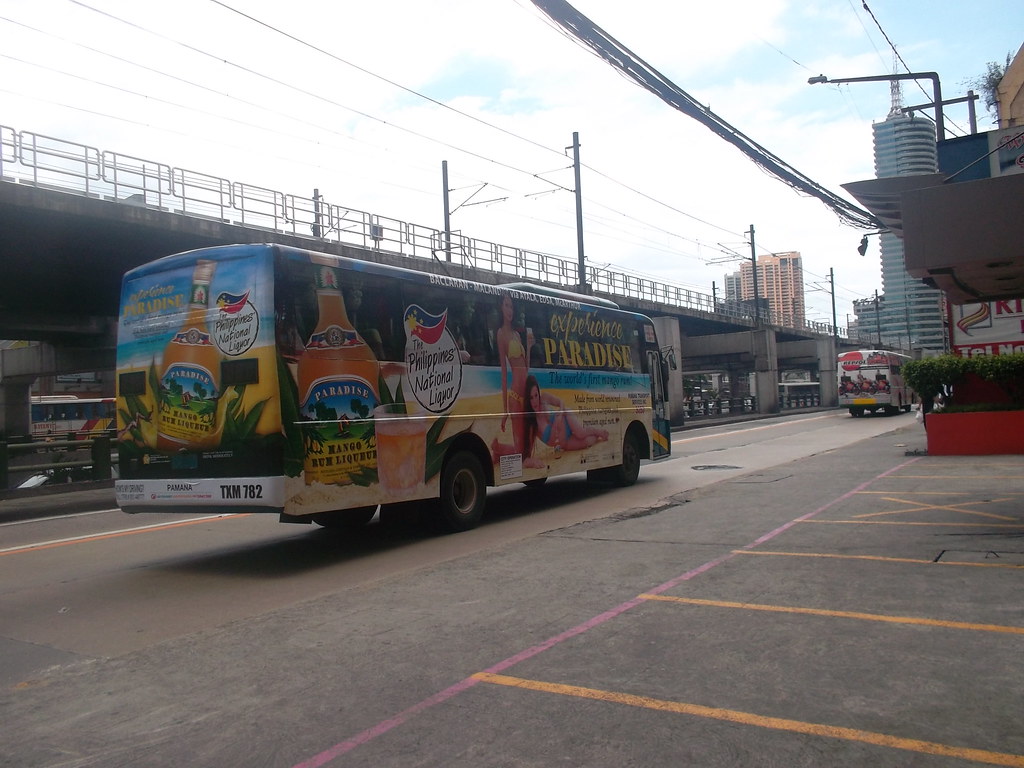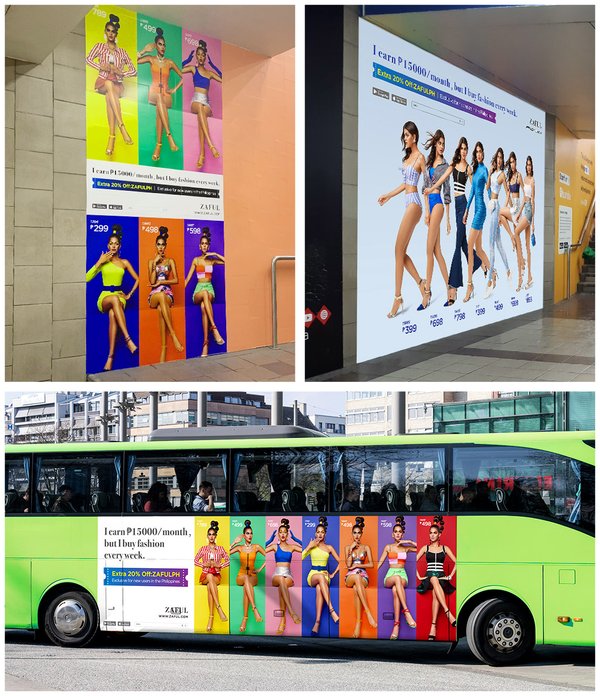Transit Advertising Philippines: An Innovative Way to Promote
Transit Advertising Philippines: An Innovative Way to Promote
Blog Article
A Thorough Examination of the Approaches and Techniques for Successful Transportation Advertising And Marketing Campaigns
Transportation marketing campaigns use an one-of-a-kind chance for brands to engage with varied target markets in vibrant atmospheres. To achieve success, it is vital to understand the subtleties of target demographics, implement cutting-edge style approaches, and select optimal positioning places. Furthermore, the performance of these projects can be considerably improved by very closely keeping an eye on performance metrics and adapting techniques as necessary. As we discover these vital elements, it ends up being clear that the course to an impactful transit advertising approach is both intricate and fulfilling, raising the question of exactly how ideal to navigate these intricacies for optimal brand name visibility.
Understanding Target Demographics
Recognizing target demographics is vital for the success of transit ad campaign (Transit Advertising Philippines). Identifying details audience segments allows advertisers to tailor their messages properly, making sure that the material resonates with the desired viewers. This strategy enhances interaction and optimizes roi
To successfully analyze target demographics, marketers need to consider a number of vital variables, including age, income way of life, occupation, and level preferences. As an example, a project targeted at young professionals may concentrate on comfort and modernity, while one targeting households may stress safety and security and integrity. Furthermore, geographical elements such as metropolitan versus country setups can substantially influence consumer habits and choices.
Data collection approaches such as surveys, focus groups, and social media sites analytics supply important insights right into group patterns and customer behaviors. By leveraging this info, advertisers can craft engaging stories that line up with the worths and demands of their target audience.
Inevitably, recognizing target demographics not just educates the calculated direction of transit ad campaign however likewise guarantees that sources are designated efficiently. This targeted method increases the chance of accomplishing campaign goals, promoting brand name commitment, and driving conversions.
Imaginative Style Strategies
Reliable interaction with target demographics depends greatly on cutting-edge creative layout methods in transportation ad campaign. To effectively capture focus in a congested aesthetic atmosphere, designers need to prioritize quality and aesthetic impact. Using high-contrast elements and vibrant shades can enhance presence, making sure that messages are easily clear from a range.
Incorporating dynamic images that resonates with the target market is important. Visual narration techniques can stimulate feelings and develop memorable organizations with the brand name. Moreover, strategic usage of typography assists convey essential details rapidly; ideal sizes and clear typefaces even more boost readability.
Incorporating interactive aspects, such as QR codes or augmented fact attributes, can involve travelers past passive observation (Transit Advertising Philippines). These strategies not just advertise user interaction however also connect the space in between standard marketing and digital engagement
Furthermore, making use of space artistically-- whether on bus wraps, transportation shelters, or train advertisements-- can lead to ingenious designs that damage the mold and mildew of conventional marketing. By accepting artistic creative thinking while maintaining brand consistency, projects can foster a solid link with their audience, inevitably driving both awareness and action. The integration of these design techniques is paramount for achieving successful transportation advertising and article source marketing results.
Strategic Positioning Techniques
Making the most of the effect of transportation advertising and marketing hinges on tactical placement approaches that guarantee optimum presence and engagement. Reliable positioning involves comprehending and assessing high-traffic areas traveler demographics to determine the most beneficial locations for ad display screens. For example, placing ads near entrances and departures of transit automobiles can catch the interest of boarding and alighting travelers, hence improving exposure.
Furthermore, making use of both external and indoor surface areas of transit vehicles can dramatically expand reach. Outside ads, visible during commutes, involve pedestrians and other drivers, while interior advertisements target passengers in a captive environment. In addition, positioning ads en route hubs, such as bus terminals or train terminals, enables for boosted perceptions as travelers transition between various modes of transport.
Timing is also important; lining up the campaign launch with peak traveling durations optimizes audience interaction - Transit Advertising Philippines. Furthermore, leveraging electronic screens en route atmospheres can help with dynamic content, supplying real-time updates and boosting customer interaction. By utilizing these critical positioning techniques, marketing professionals can make sure that their transportation advertising campaigns accomplish optimal visibility, reverberate with the target market, and eventually drive desired results

Determining Campaign Performance
To examine the success of transportation marketing campaigns, it is necessary to employ a selection of dimension techniques that offer insights into target market involvement and total performance. One reference primary technique is the usage of crucial performance indicators (KPIs), such as reach, perceptions, and involvement prices, which measure exactly how several individuals saw the advertisement and communicated with it.
Studies and emphasis groups can also be instrumental in determining customer understandings and recall, permitting marketers to understand the impact of their messaging. In addition, tracking internet site web traffic and social networks engagement throughout and after the campaign assists determine straight feedbacks to the advertising.
Another efficient method is using location-based analytics, which can provide information walking traffic around specific transit places, using understandings into whether the campaign efficiently recorded the interest of commuters. Furthermore, assessing sales information can expose correlations between transit marketing and boosted earnings, supplying substantial evidence of a campaign's effectiveness.
Study of Success
Recognizing the performance of transit ad campaign via dimension techniques lays the groundwork for analyzing real-world instances that show effective end results. One remarkable case research involves a national beverage brand name that used bus wraps in city areas. The project aimed to increase brand presence and sales throughout the summertime. By using geo-targeted electronic ads and analytics, the brand measured a 30% increase in sales in regions where the covers were plainly presented, demonstrating the straight influence of transportation advertising and marketing.
Another compelling instance originates from a regional not-for-profit company that introduced a project on train systems to advertise a community occasion. The company incorporated dynamic visuals with QR codes guiding travelers to a registration page. Post-campaign evaluation disclosed a 50% increase in occasion presence compared to the previous year. Making use of direct engagement through technology enhanced the campaign's reach and effectiveness.

Verdict
In summary, effective transit advertising campaigns necessitate a comprehensive method that incorporates an understanding of target demographics, ingenious design techniques, and tactical positioning. By prioritizing psychological engagement via strong visuals and optimizing exposure during peak travel times, brand names can dramatically enhance their influence. Moreover, ongoing measurement of project performance with crucial performance indications and customer feedback ensures constant enhancement. Collectively, these strategies foster brand existence and take full advantage of the roi in transit advertising efforts.
Recognizing target demographics is important for the success of transportation advertising and marketing projects.Reliable interaction with target demographics counts heavily on innovative creative layout methods in transportation advertising campaigns. By utilizing these strategic positioning methods, marketers can make certain that their transportation advertising and marketing campaigns attain optimal presence, resonate with the target audience, and inevitably drive preferred outcomes.
Recognizing the effectiveness of transit advertising and visit the website marketing projects via dimension techniques lays the groundwork for examining real-world examples that show successful outcomes.In summary, effective transit marketing campaigns necessitate a detailed approach that integrates an understanding of target demographics, ingenious design strategies, and strategic positioning.
Report this page